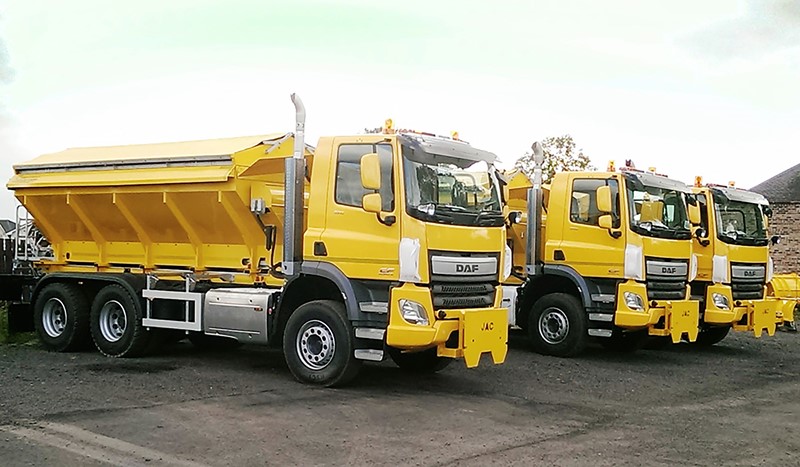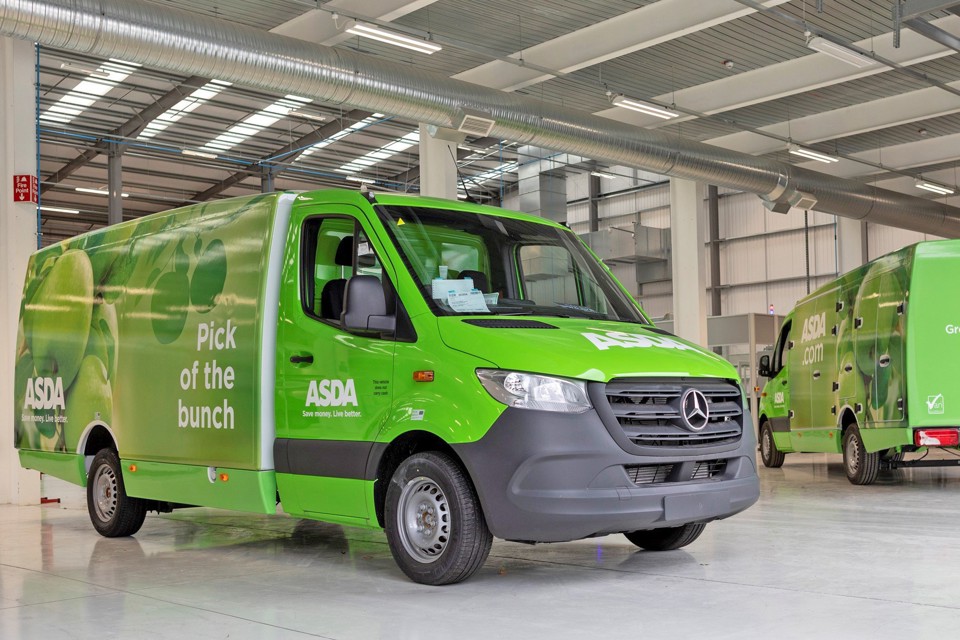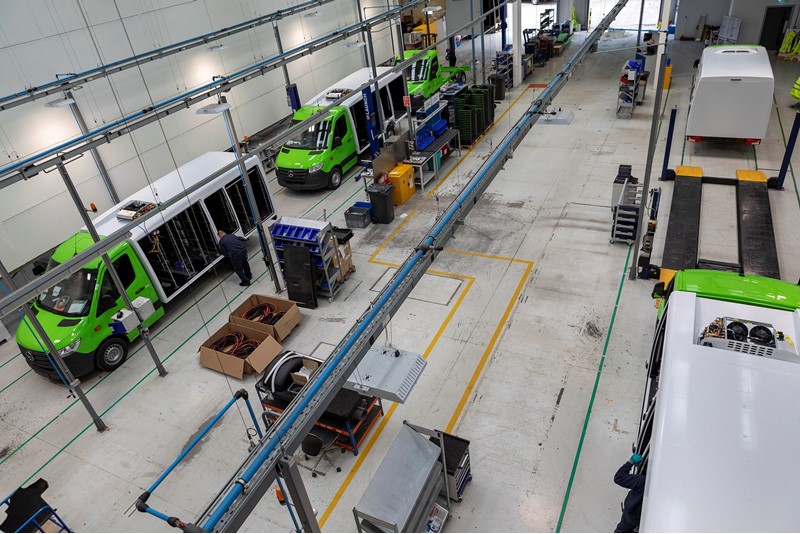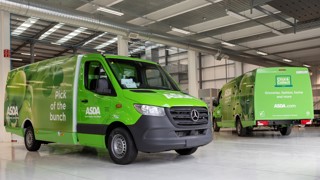Vehicle conversions often focus on enabling a vehicle to perform a specific job or making it more practical than the original base vehicle allows. But there’s now an emerging market for vehicle modifications that improve efficiency.
These include changing the fuel type, the entire powertrain or fitting a new, more aerodynamic body.
Operators are under increasing pressure to clean up the exhaust emissions from their fleets. The most obvious solution is to replace vehicles with electric ones. However, the limitations on range, combined with the significant cost of these vehicles, can make it prohibitive.
Heavier vehicles, especially those that cover longer distances or operate in remote areas where charging infrastructure is limited, are the hardest and most difficult to ‘clean up’.
Changing the fuel type
For operators with existing diesel vehicles that wish contribute to cleaner air, while also making savings on fuel, a hydrogen conversion could be the ideal solution.
One fleet that has decided to make the investment in hydrogen power is Glasgow City Council, which is introducing a new fleet of hydrogen-powered gritters.
Half of the new vehicles are purely hydrogen powered and half have been converted to Hydrogen Duel Fuel by the Ultra Low Emission Mileage Company (ULEMCo).
ULEMCo believes it has found a ‘ready market’ for its hydrogen dual fuel conversions in heavy duty ‘back to base’ utility vehicles, where the practicality and cleaner performance are readily apparent. It also offers solutions for vans.
Using ULEMCo’s H2ICED (hydrogen burned inside an internal combustion engine) technology, the diesel vehicles are fitted with hydrogen storage tanks and an injection system which, using a special control module, ensures hydrogen is used in the fuel mix when it can burn most efficiently.
It works in a similar fashion to a liquefied petroleum gas (LPG) conversion and promises a reduction in carbon emissions of up to 70%.
Glasgow’s city council is in the process of securing ‘green hydrogen’ for the fleet to refuel. It is also expected that other air quality emissions, like nitrogen oxide (NOx), will be greatly reduced compared with the base vehicle.
The hydrogen range varies dependent on the size of the tanks and, when the vehicle runs out of hydrogen, it can still be used as a normal diesel.

Based on Glasgow gritters’ normal duty cycles, around a third of the energy they use is expected to come from hydrogen, resulting in the same proportion of emissions being saved.
“The environmental impact of large diesel-powered utility vehicles is very high in city centres” – Amanda Lyne, managing director of ULEMCo.
Glasgow City Council, which operates 2,000 vehicles, has an ambition to become Britain’s first net zero carbon city and plans to operate a carbon-free fleet by 2030.
This is the first set of conversions for gritter lorries carried out by ULEMCo and is the company’s largest volume order to date.
By deploying fleets of hydrogen vehicles in this way, ULEMCo believes it builds the base load for hydrogen infrastructure investment and helps to create a market for hydrogen fuel that will make it easier for other local authorities and businesses to make the switch.
As part of the two-year Low Emission Freight and Logistics Trial (LEFT) project, the business converted 11 vehicles to hydrogen dual-fuel. These included four refuse trucks, a road sweeper, a patient transport vehicle, four panel vans and a refrigerated van.
During the trial, the vehicles covered nearly 37,000 miles and used 1,619kgs of hydrogen. It is estimated that the vehicles emitted 14 fewer tonnes of CO2 while running on hydrogen.
Improved air quality
Tailpipe emissions in a number of specific applications, such as refuse trucks, were significantly better than the Euro 6 base vehicles, with NOx emissions reduced by 29-85% across the range of cycles tested. If deployed full time, ULEMCo believes the vehicles would not only save carbon but also provide improvements to local air quality.
With 20-45% of the diesel fuel being displaced by green hydrogen on the various vehicles, the project concluded that with the appropriate hydrogen infrastructure, fleet-wide roll-out could provide a step change in overall fleet emissions.
Lyne says: “The LEFT trial was an excellent opportunity for us to show the diverse range of commercial vehicles that can be hydrogen-enabled. This provides a route to reducing greenhouse gas emissions significantly across fleets of heavy use and heavy-duty vehicles without requiring the operators to make major changes to their usual operations.
“A number of the trial partners, including Aberdeen City Council, are continuing to use the vehicles at locations where the hydrogen infrastructure is more reliable. All partners agreed that if this was available for them too, they would have continued to do the same.”
The company also provides hydrogen fuel cells that can be retrofitted to electric vehicles to boost their range.
Changing the body
Regardless of the fuel type your fleet uses, fitting a lighter and more aerodynamic body will enable it to travel further while using less energy.
Coventry-based engineering firm Penso has developed a range of bodies that do exactly that, promising a reduction in fuel usage of around 30%.
In side-by-side comparisons, an unladen Penso-bodied vehicle is around 400kg lighter than most competitor models, contributing to the fuel savings.
The bodies also have a more aerodynamic design, which lowers the height of the vehicle and increases its length.
Daniel Hurcombe, managing director of Penso, says: “We have taken an entirely fresh approach in what is typically a very traditional sector, using new materials and processes to unlock major efficiencies and sustainability improvements for last mile delivery.
“Crucially, we can offer customers a clear road map to net zero emissions and dramatic improvements in total cost of ownership.”
The Blue Ocean range of home delivery pods and grocery delivery pods is designed to fit a medium wheelbase Mercedes-Benz Sprinter, but the company is planning to expand the range to suit a number of vehicles, including electric and hybrid models.
The bodies are made from a combination of recycled plastic bottles and carbon fibre, which are sandwiched together to create strong and lightweight panels with insulating properties to suit refrigerated vehicles.
“Creating a carbon fibre pod could be seen as an expensive exercise purely to reduce weight; but developing the commercial and operational model alongside the design, engineering and manufacturing process has been just as important. In fact, it’s the commercial and market demand to reduce weight which drove the solution,” explains Hurcombe.
“Home delivery fleets face multiple challenges, including how they reduce their carbon footprint, cope with driver shortages and increase the number of delivery slots they can offer in a market faced with increasing legislation and the imminent technology change away from diesel. What we’ve done at Penso is create a solution which can deliver tangible benefits in all of these areas” – Daniel Hurcombe
Combined third-party track testing and real-world testing in a customer fleet over a mix of inner-city and suburban routes, a Penso-bodied vehicle achieved 10mpg more than an equivalent vehicle.
Hurcombe explains: “For a typical supermarket vehicle, that equates to a saving of around £2,400 per vehicle per year in diesel costs alone. Multiply that across a fleet of 3,000 home delivery vans and suddenly you’re saving £7,200,000 a year on diesel. That’s a fairly compelling saving for a fleet manager to share with their finance and procurement teams.”
First supermarket customer
The first business to take delivery of the new converted vehicles was the Asda supermarket chain, with an initial order of 25 units.
Simon Gregg, vice-president of online grocery home shopping at Asda, says the new vehicles will make a real difference to cutting its carbon footprint.
“As a business, we are constantly looking at ways we can reduce our carbon emissions, not just because we know that sustainability is important to our customers and colleagues, but because all of us have a responsibility, and it’s just the right thing to do, making improvements wherever we can,” he explains.
Each conversion comes with a 10-year structural warranty, which means fleets can plan around each pod lasting twice as long as a traditional body in a high-utilisation, frontline fleet. In most applications this will mean transferring the pod onto a new chassis after five years.
Penso, which plans to build 10,000 vehicles per year, says it has geared its operation to be able to undertake the body swap on behalf of customers.






















Login to comment
Comments
No comments have been made yet.